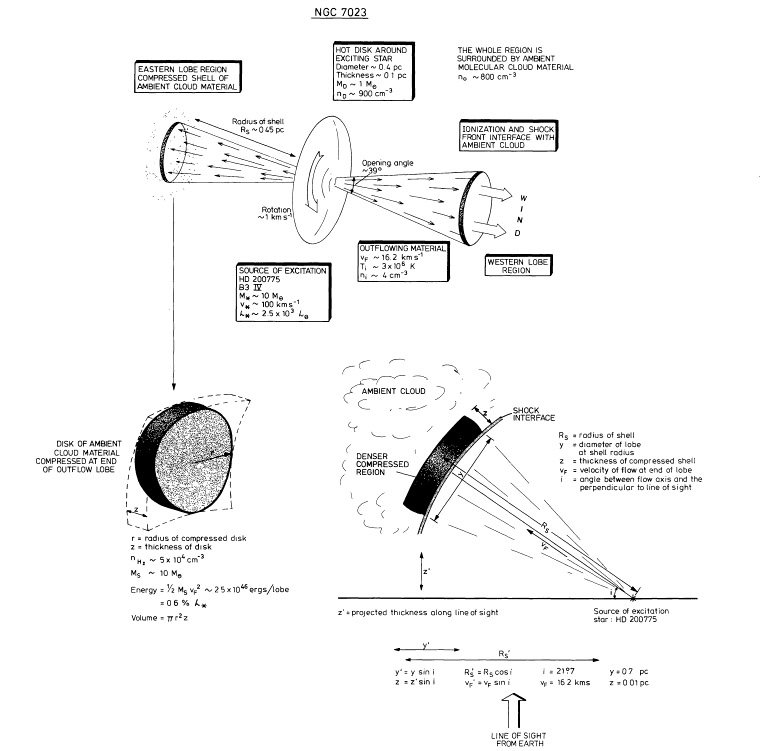
The bright star HD 200775 shines through the nebula NGC 7023 like a beacon through a celestial fog. The illuminating star of the nebula is designated HD 200775, a 10 solar mass star centrally imbedded in a region surrounded by ambient molecular cloud material. Optically the light we see from reflection nebulae such as NGC 7023 is starlight reflected from the surface of innumerable small dust particles. Historically this was proven by showing the similarity of the spectra of the central illuminating star and its nebula. Aside from the reflected light of its central star, the microscopic dust particles also emit radiation in the infrared. We see the optical counterpart of this emission in the low level light of the dark dust clouds surrounding the bright nebula on its south and west side, respectively catalogued as L 1172 and L1174. Recent infrared studies of NGC 7023 indicate the presence of complex molecules such as polyaromatic hydrocarbons formed within the dust cloud. NGC 7023 is located at the northern end of a vast and optically invisible molecular cloud in an area where low and intermediate star formation is occurring. The central star is at the center of a small cluster of low and intermediate mass pre-main sequence stars similar to HD 200775. HD 200775 is a variable star and part of an eccentric binary system with a periodicity of 3.7 years.
The distinct hourglass shape of the nebula was formed by the interactions of the central star with the surrounding ambient dust cloud. HD 200775 is a B3 type pre-main sequence star known as a Herbig Be star. Herbig Ae/Be stars are intermediate mass (1-10 solar masses) pre-main sequence stars similar to their lower mass "solar size" counterparts, the T-Tauri stars. They are usually associated with dust and reflection clouds but unlike their more massive OB cousins they cannot form extended HII regions. That said, HD 200775 is one of the brightest Herbig Be stars known. With a temperature of 17000 degrees Kelvin it is hot enough to form a small HII region within a small radius of the central star. The small HII region is apparent optically as the ruby lips of the nebula just to the north and south of the central star. Studies of the star and nebula at radio wavelengths show the star is located within a bilobed cavity of gas whose walls delineate the exact borders of the optical nebula. The cavity is about 5 by 2.5 light years in dimension and lies in a northeast-southwest orientation. There is a small region of ionized gas (small HII region) surrounding the central star which is perpendicular to the lobes. HD 200775 most likely formed the bilobed cavity at an earlier stage in its evolution. Bipolar outflows from the contracting pre-main sequence star most likely excavated the bilobed cavity which formed the template for the physical structure of the nebula. The lack of any high velocity gas within the nebula at present suggests that the outflows no longer exist. The lobes show a slightly off center symmetry. The center of symmetry is located about 1/3 of a light year west of the star indicating that the central star has since moved since the earlier time of its outflows.

